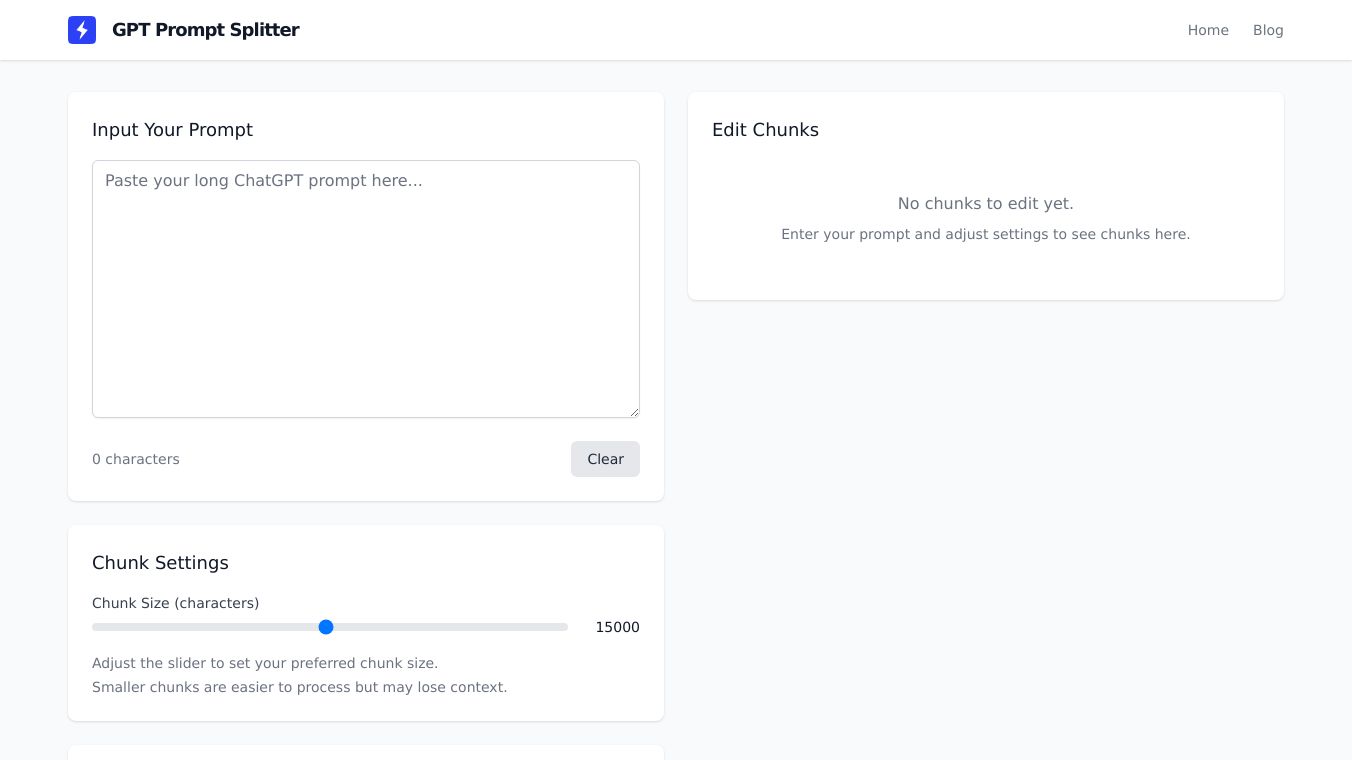ChatGPT Prompt Splitter

ChatGPT Prompt Splitter is a clever tool designed to handle the character limits of AI language models like ChatGPT. It is open source and allows users to input long texts, articles, or documents. Then, it splits them into smaller pieces that ChatGPT can manage. This is perfect for developers, researchers, data scientists, and anyone using ChatGPT for writing tasks.
Benefits
The ChatGPT Prompt Splitter offers many advantages. It can process large text blocks safely and efficiently. Users can choose the length of each split part, with a default of 15,000 characters. The tool also keeps the context across split parts, ensuring the AI understands the order. It has a simple web interface and supports different input formats like plain text and PDFs.
Use Cases
This tool is useful for many tasks. It can help with content creation, data analysis, customer support, legal document processing, and making educational content. You can copy and paste the split parts into ChatGPT or other AI platforms. This helps overcome length limits while keeping the original context.
Tips for Effective Use
To use the ChatGPT Prompt Splitter well, be specific about your writing task. Break down your prompt into smaller, focused questions. Provide context and use bullet points to organize your questions. Be clear about what you expect from the AI. Feel free to try different ways to ask your questions to get better results.
This content is either user submitted or generated using AI technology (including, but not limited to, Google Gemini API, Llama, Grok, and Mistral), based on automated research and analysis of public data sources from search engines like DuckDuckGo, Google Search, and SearXNG, and directly from the tool's own website and with minimal to no human editing/review. THEJO AI is not affiliated with or endorsed by the AI tools or services mentioned. This is provided for informational and reference purposes only, is not an endorsement or official advice, and may contain inaccuracies or biases. Please verify details with original sources.












Comments
Please log in to post a comment.